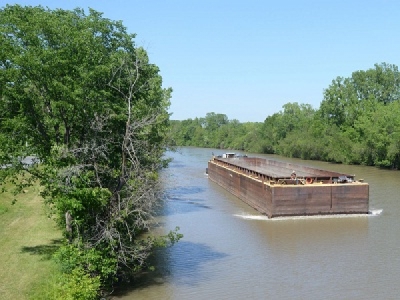
Posted on October 11, 2016
By Kathleen Moore The Post Star
The final stage of the state Canal Corp.’s quest to dredge the PCB-contaminated canal will start within a month — and if all goes well, the agency could get permission to dredge next year.
It’s been eight months since the Canal Corp. applied for permission to dredge the Champlain Canal in the Hudson River, from Fort Edward to Waterford.
The agency wants to remove material from the navigational canal in the river, bringing the canal’s depth to 12 feet. It is several feet short of that goal in many areas.
The Army Corps of Engineers will begin the 30-day public comment period on the proposal by November, said Upstate Corps Chief Amy Gitchell.
“We’re going to try for this month,” she said. “Or early November.”
Usually, the Corps makes a decision within four months after the public comment period. But Gitchell cautioned that it could take longer in this case.
“Our goal is 120 days. However, if the issues require more scrutiny, we’re not going to make a decision before we address everything,” she said.
She also cautioned that the Corps doesn’t always say yes. But agencies are preparing for dredging to take place sometime next year, on the theory that the Army Corps of Engineers will probably grant the permit.
At the federal Environmental Protection Agency, officials plan to take note of exactly where and when dredging occurs. They expect to see a slight rise in PCB contamination in fish after dredging in those areas, so it’s important for them to be able to document why the fish got worse instead of better.
EPA is measuring contamination in fish at many points along the river to chart the slow recovery of the ecosystem.
“Remember, we’re moving into the long-term monitoring of the river now,” said EPA Project Manager Gary Klawinski.
But he’s not objecting to the additional dredging.
“We encourage the state to do the dredging. That’s always a good thing, to remove some PCBs,” he said. “We’re going to do everything we can to help them get this done.”
His agency hasn’t seen the Canal Corp.’s final plan yet. Neither has the public. The Army Corps of Engineers will release a description of the plan at the start of the public comment period.
The Canal Corp. actually applied for two permits: one for the Fort Edward to Waterford area, which has PCB-contaminated material, and one for “maintenance dredging” from Fort Edward to Whitehall.
The agency would not use the former sediment dewatering facility in Fort Edward that General Electric Co. built for its dredging project. This dredging would be far smaller than the GE project, and could be done with dewatering machines on barges.
Klawinski said the material would probably have a “lower concentration” of PCBs than the material removed by GE.
“We took out the worst of the worst,” he said.
The project removed 450,000 cubic yards of material from the canal and capped some areas where PCBs were still found after repeated dredging. The caps were placed more than 12 feet down, so that they would not be accidentally removed by the Canal Corp. during navigational dredging, Klawinski said.
“We actually restored some areas to full depth,” he said.
The dredging will cost more than a typical navigational dredging because the Canal Corp. must pay to dispose of the material as hazardous waste. Klawinski said it seems reasonable to ask GE to pay for that additional cost, but not for the entire cost of dredging.
“I think that would be in the realm of consideration,” he said.
GE officials do not agree.
“GE’s focus has been the environmental dredging project,” said Mark Behan of Behan Communications, which GE hired to handle media relations on dredging. “Keeping the Upper Hudson and Champlain Canal navigable is the responsibility of the New York State Canal Corporation, which is fully capable of conducting navigational dredging if and when it deems necessary.”
Source: The Post Star





